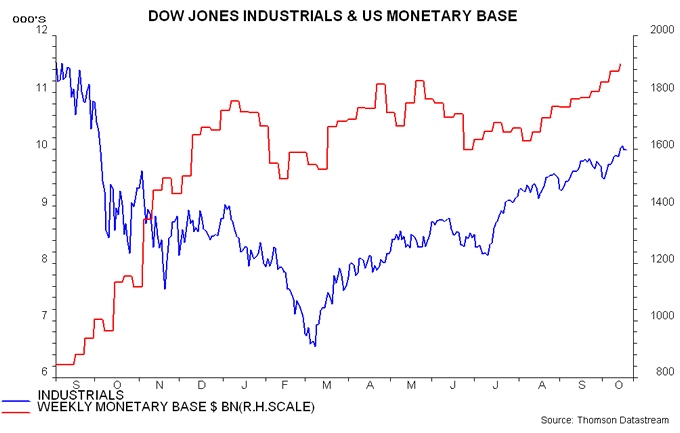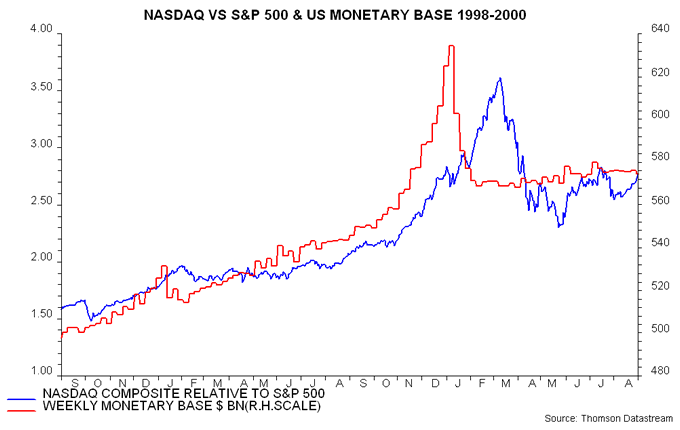As discussed in a post last week, equities and other "risky" assets have recently shown a strong correlation with movements in the US monetary base, with the base tending to lead. This relationship was highlighted by former hedge fund manager Andy Kessler in an article, "The Bernanke Market", published in the Wall Street Journal in July. (The monetary base comprises currency in circulation and banks' reserve balances with the Federal Reserve.)
The new rally highs reached by many equity markets last week followed an acceleration in the monetary base in late September and early October. The base posted another solid increase in the week ending last Wednesday – see first chart. (The Fed publishes the weekly data after the market close on Thursdays.)
The monetary base is likely to continue to expand at least until year-end. This is because the Fed is committed to buying about $500 billion more agency mortgage-backed securities (MBS) and other agency debt by the end of the first quarter of 2010. (At its last meeting, the Federal Open Market Committee agreed to purchase a total of $1.25 trillion of MBS and up to $200 billion of other agency debt. As of last week, the Fed held $763 billion of MBS and £136 billion of agencies.)
The impact of this buying on banks' reserve balances is likely to be partly offset by a decline in other forms of Fed lending, including "term auction credit", discount window loans, its holdings of commercial paper and liquidity swaps with other central banks. These four items, however, currently sum to $267 billion – even in the unlikely event of the total falling to zero, the effect on reserves would be swamped by securities purchases.
Banks' reserves will also be boosted by the US Treasury's plans to run down the balance in its supplementary financing account at the Fed, using the funds to reduce the stock of Treasury bills. This balance currently stands at $100 billion and a recent Treasury release projected a fall to $15 billion.
The prospect of the monetary base continuing to grow rapidly until year-end evokes memories of 1999, when the Fed injected liquidity on a then-unprecedented scale to meet a perceived rise in the precautionary demand for cash caused by fear of Y2K computer disruption. This fed the final stages of the bubble in technology-related stocks, which fell sharply soon after the Fed drained liquidity in early 2000 – second chart
"Excess" liquidity tends to be channelled towards assets perceived as "hot", usually reflecting a combination of a plausible investment story and recent outperformance. Technology stocks were the speculation of choice in late 1999. Bullish commentary now focuses on emerging equity markets and wider commodity themes – these areas may continue to outperform, at least until the Fed turns off the liquidity tap.
